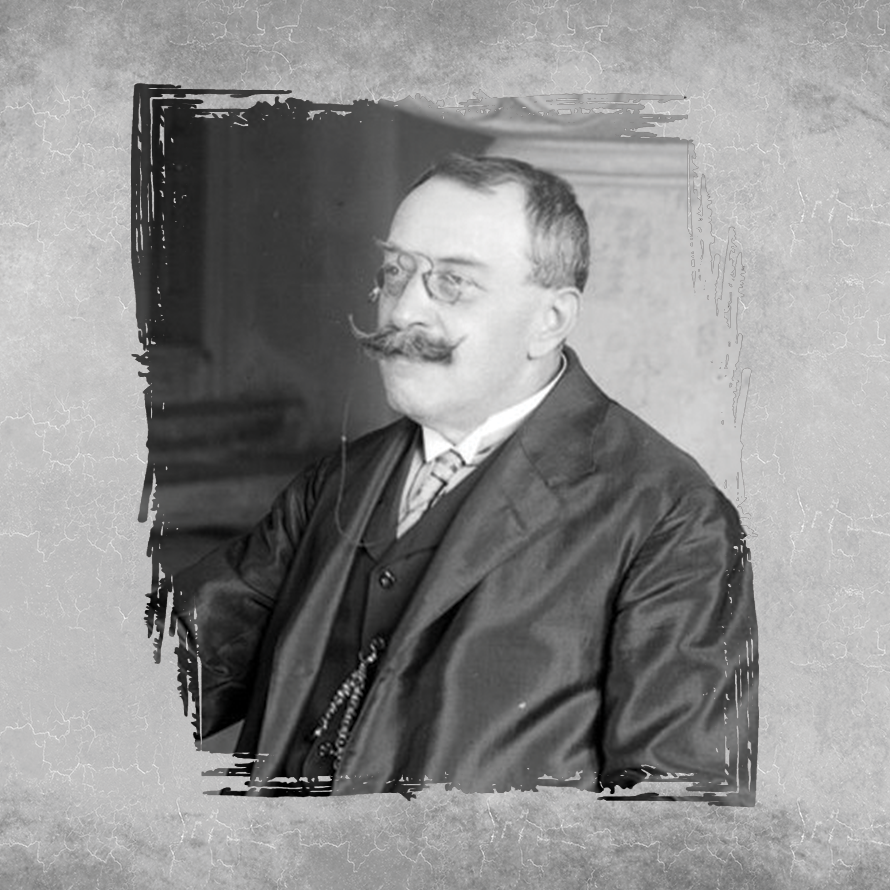PERSONALITIES
JUDR. KARL SIEGL
BACK TO LIST

JUDr. Karl Siegl
Birthdate: November 6, 1851
Date of death: March 18, 1943
He studied the grammar school in Cheb and the Law Faculty in Prague. Ever since his youth he was interested I history and he also attended historical lectures at the Philosophical Faculty while studying in Prague. By that he got professional education in history and in the auxiliary historical sciences. In 1874, he started working at the Regional Court in Cheb, carrying out the legal practice in the building of the prison, in a former Klarisky convent in the premises to which he would return by coincidence after many years as the director of the archive. In his function of a court clerk he achieved a good reputation due to some cases and he also participated in one of the last executions in Cheb which was performed in the garden of a prison in 1881. A severe stomach and nervous disease forced him to go to early retirement in 1895 but when the Cheb burgomaster offered him the position of the archive director after H. Grad, he accepted it after hesitating for a longer time. The illness got better and he was able to stay in his new function until 1934 and despite a few surgeries and personal tragedies (his only son dr. Karl Siegl, the director of study library in Klagenfurt, Austria died tragically in 1934) he had done here a quantity of work which can hardly be appreciated. After having retired definitely, he devoted himself to scientific work for a few years, passing away at the age of 92 years in the middle of a flow of tributes and personal awards which smelled of ´brown nationalism ´of that time.
Karel Siegl, by his nature inclined to the work in the archive and to the study of regional history where he applied the best of his diligence and inexhaustible vitality. In the course of forty years, he arranged the archive to an exemplary accessible and scientifically utilizable form, registering thousands of deeds, sorting a plentiful richness of act material, making indexes to historically serious ranges of mediaeval books, catalogizing the old Magistrate library. He completed the basic inventory A, B, C (A – deeds, B – writings, C – books) by a range of partial catalogues and inventories, thereby he made the historically most serious fund of the Cheb archive (fund 1 — the town and land of ) available for scientific and laic public. At the time when Siegl was a director, the archive was moved from Rudolfinum (later grammar school) to the building of a former Klarisky´s convent (1912), where it is until today.
At his extensive scientific and publication activity, Karl Siegl drew from the sources of the Cheb archive. Besides bigger works he wrote over two hundred articles to various newspaper and magazines. The topic was solely the history of Cheb and of the Cheb area. He clarified the complex state and law status of the Cheb area (it was most compliant with the German nationalism at that time), individual parts of the Cheb history, activity of significant personalities, destinies of particular houses, streets, villages and tribes, exposing different interesting events as well as small stories of the ordinary day. As a whole, these works composed a varied mosaic of the Cheb history, a factual correct mosaic, since Siegl, in principle, drew from a source material. In particular, he liked to edit individual sources. Although there may be some objections in term of the contemporary practices, they are the biggest contribution of Siegl in the field of science. Many sources have not been newly worked up since his publishing and therefore they serve as a primary source of knowledge of the Cheb history today. The lack of the Siegle´s historical work consisted in a complete absence of analysing analysis of the historical process. Therefore he was not able to cover the crucial moments and evolutionary specialties of the Cheb past which corresponded to the latest positivism at that time.
Karl Siegl was also the director of the Cheb museum for many years. His leadership meant a new phase also for this institution, when the useful and needed order and internal organization were instituted and practiced. Even though he had to cope with different subjects and fields which were not his specialty, he was leading the museum properly, making an exemplatory educational institution with the scope of authority in the whole region. Under him, new expositions were installed in a more modern and more conceptual way, the level of the guiding service was increased and he himself was the author of a new collections catalogue. He also donated his own precious collection of old plates to the museum fund which contributed even more to the positive impression from his work as the director.
Besides his work functions, Siegl was involved also in the public life of his town. He belonged to the typical and characteristic figures of Cheb at the end of the monarchy and the inter-war republic. The public knew him as an expert on the Cheb´s history, read his popular articles, met him at lectures and various events, perceiving him as a little bit eccentric but honoured and in his field respected member of the local intelligence. Of a big importance was also his share in the Cheb´ s Wallenstein plays before World War I. In these costume and theatrical attempts of the Cheb´s burgesses to uplift the faded level of their town, Siegl worked as a scientific advisor and spiritual creator of their programme.
This prudent looking old gentleman with walrus moustache and the inherent long pipe belongs to the history of Cheb and a place of honour in a range of conscientious Cheb archivists belongs to him. There may be objections to his opinions and attitudes but he cannot be blamed for have ever sinned against the scientific veracity. By his implicit tendency to the sources he has become the most distinctive representative of the contemporary positivist science at the Cheb area and his unbelievable diligence remains to be permanent challenge to the next generations of Cheb´s archivists.
Show more


 OFFICIAL WEBSITE OF CITY CHEB
OFFICIAL WEBSITE OF CITY CHEB
 TOURIST INFOCENTRE
TOURIST INFOCENTRE
 HISTORICAL CHEB FOUNDATION
HISTORICAL CHEB FOUNDATION

 CULTURAL CENTER SVOBODA
CULTURAL CENTER SVOBODA
 WEST CZECH THEATER CHEB
WEST CZECH THEATER CHEB
 CITY LIBRARY IN CHEB
CITY LIBRARY IN CHEB

